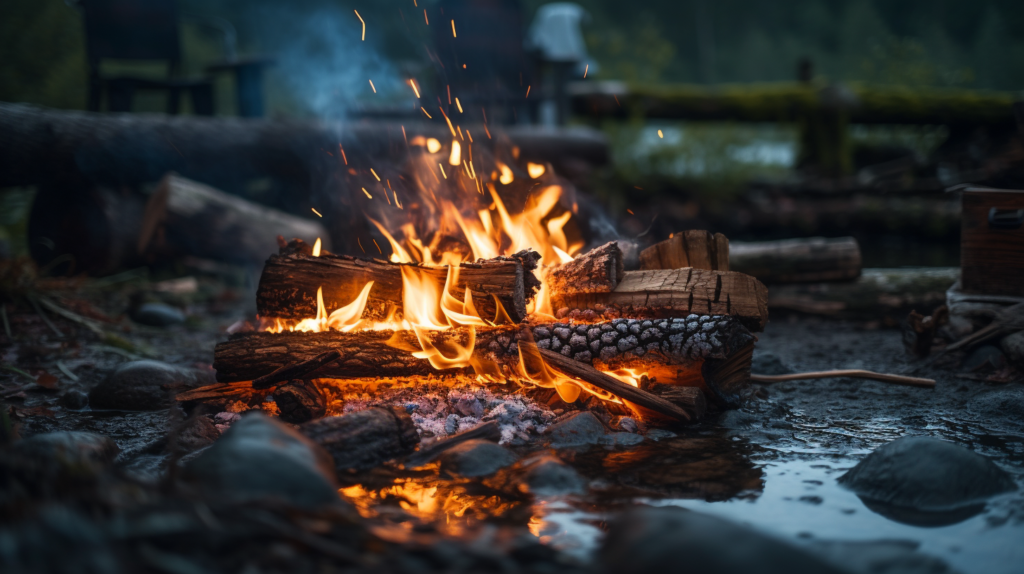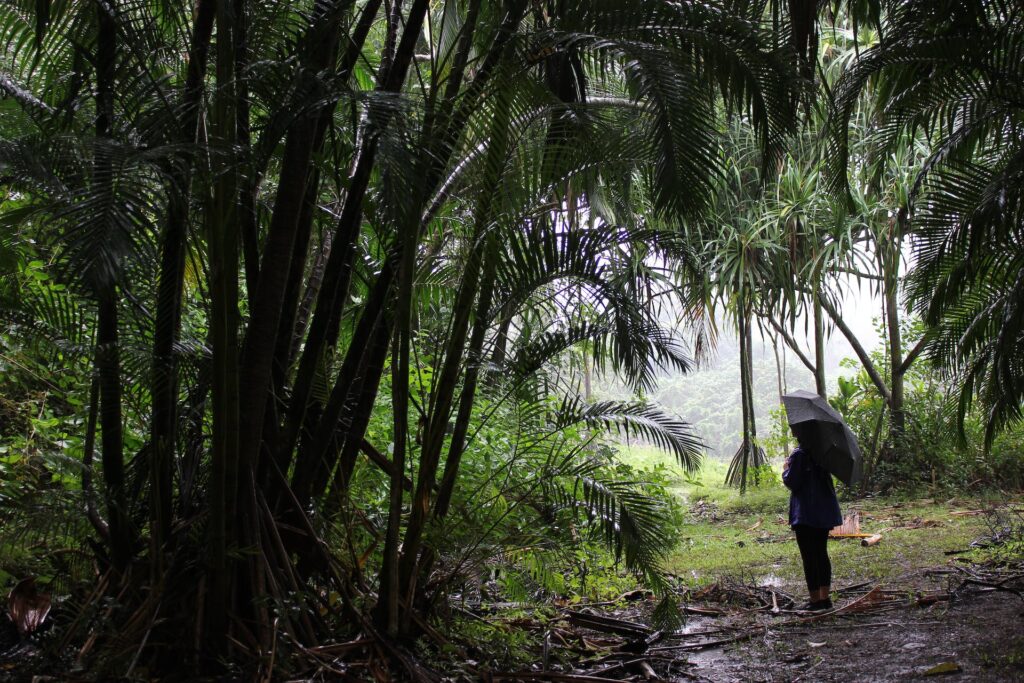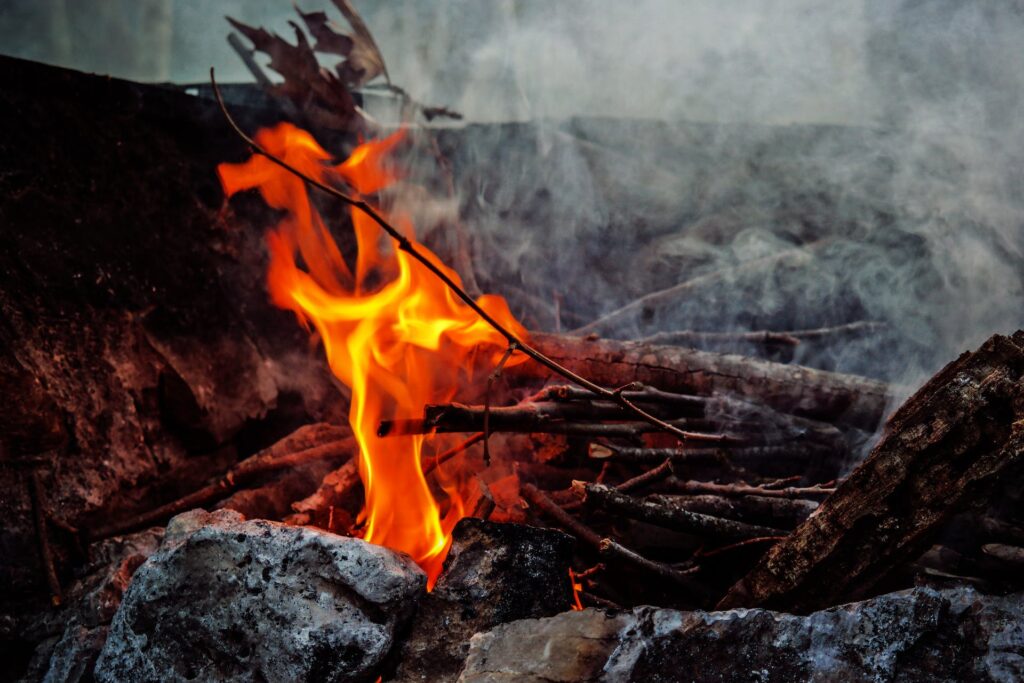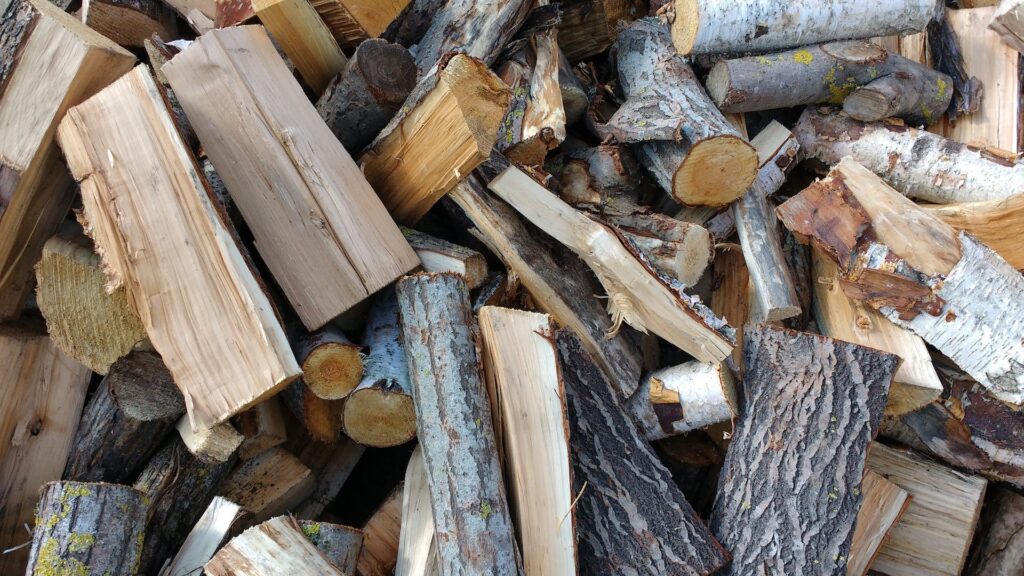Starting a campfire in the rain requires reliable ignition tools like waterproof matches, a dependable lighter, or fire starters designed for damp environments. Waterproof matches are coated to stay dry even in rainy weather, while outdoor lighters may have windproof features. Fire starters like petroleum jelly-soaked cotton balls or commercially available sticks are also effective.

Once you have your ignition tool, protect it from rain with your hands or improvised coverings. Cupping your hands around the flame area or using items like a plastic baggie or a leaf as an umbrella can help prevent immediate extinguishing. Work swiftly but safely when using coverings to avoid accidents.
Gathering Dry Materials
Searching for dry kindling and tinder
When it’s raining, finding dry kindling and tinder becomes a crucial part of starting a campfire. Thankfully, nature often provides hidden treasures even in wet conditions. One strategy is to search for dry materials underneath tree canopies or large rocks.
These spots act as natural shelters, shielding the ground from rain. Fallen leaves, twigs, and small branches that accumulate in these areas are usually drier than those directly exposed to the elements.
Inside hollow logs or fallen branches
Another excellent source of dry kindling is inside hollow logs or fallen branches. Over time, these spaces become naturally insulated from moisture by the thick layer of bark or wood surrounding them. With careful inspection and a keen eye, you might find some well-preserved twigs or sticks nestled within these hidden pockets.
Collecting dry leaves or pine needles as additional tinder
In your quest for dry materials, don’t overlook the power of nature’s own tinder: leaves and pine needles. Despite rain falling all around them, these natural wonders manage to retain their flammable properties. Scour the forest for fallen leaves that have collected under trees or tucked away between rocks—they may surprise you with their dryness.
Similarly, pine trees shed their needles regularly, creating an abundance of ready-to-burn fuel. By exploring these hiding spots and paying attention, you can gather enough dry kindling and tinder like leaves and pine needles to boost your chances of successfully starting a campfire even in inclement weather.
Creating a Suitable Fire Bed
Selecting an appropriate location away from flammable objects
When it comes to starting a campfire in the rain, location is everything. You want to choose a spot that is not only sheltered from the rain but also away from any potentially flammable objects. Look for an area with a natural cover, such as under the canopy of trees or large rocks.
This will provide some protection against the rain and minimize the risk of embers spreading to nearby dry vegetation or structures. Safety should always be your top priority when starting any fire.

Clearing the ground from wet vegetation and debris
Before you start building your campfire, take some time to clear the ground around your chosen location. Remove any wet vegetation, such as grass or leaves, as these can make it more challenging for your fire to ignite and maintain its flame.
Wet debris can also create excess smoke and dampen the fire. Use a small shovel or your hands to remove these obstacles and create a clean area for your fire bed.
Using a tarp or waterproof groundsheet if available
If you have come prepared with camping gear, consider using a tarp or waterproof groundsheet to further protect your fire bed from moisture. Lay it down on the cleared area before proceeding with building your campfire.
Not only will this provide an additional barrier between the wet ground and your firewood, but it will also help prevent water seepage into the base of your fire bed once you’ve successfully started your campfire. Plus, having a dry surface will make it easier for igniting flames and maintaining heat.
Creating a suitable fire bed is crucial when starting a campfire in the rain; it provides both safety precautions and increased chances of success in igniting and maintaining flames. Select a location away from flammable objects, clearing the ground from wet vegetation and debris, and utilizing a tarp or waterproof groundsheet if available
Building a Rain Shield
Rain Shields
When it comes to starting a campfire in the middle of a downpour, one of the most crucial steps is to build a sturdy rain shield. This shield will protect your fire from getting drenched before it can even get a chance to grow.
Nature provides us with an abundance of materials that can be used to construct an effective shelter. Fallen branches or large leaves are great options for building rain shields.
Ventilation
Make sure to not suffocate it with inadequate ventilation. Building a rain shield in a way that allows for proper airflow will ensure that oxygen reaches your fire and keeps it burning steadily. A good rule of thumb is to create openings on opposite sides of your shelter, allowing air to flow through and breathe life into the flames.
Improvisation
Building a rain shelter does not require precision or fancy tools—improvisation is key! Nature provides you with all the materials you need; you just have to tap into your resourcefulness. Fallen branches can be leaned against each other at various angles to create a simple roof structure, while large leaves can be cleverly positioned as overlapping tiles on top, acting as natural shingles that shed water effortlessly.
Don’t forget to secure everything well enough against strong winds so that your masterpiece doesn’t end up scattered across the forest floor. By following these tips and constructing an effective rain shield using natural materials such as fallen branches and large leaves, you’ll ensure that your campfire stays relatively dry despite the unrelenting rainfall.
Balancing protection from moisture with adequate ventilation will allow the fire’s flickering flames to dance and warm your spirits, even when the weather seems determined to dampen your outdoor adventure. So, embrace your inner MacGyver, get creative with what nature has to offer, and watch as your rain shield becomes a beacon of hope in a wet wilderness.
Preparing the Fire Lay
The Art of Arranging Firewood
When it comes to starting a fire in the rain, proper arrangement of firewood is crucial. Creating a solid foundation for your flame is like building a cozy little home for it to thrive. Begin by arranging larger pieces of dry firewood in a teepee shape.
The key here is to leave enough space in the center for airflow, allowing the flames to grow. You want your fire lay to be sturdy and stable enough so that it won’t collapse when you add more fuel.
Kindling
Place smaller pieces of kindling inside the teepee structure you’ve created with your larger wood.
Kindling acts as the bridge between small sparks and roaring flames, so make sure it’s dry and combustible. Twigs, small branches, or even dried pine needles work wonders here.
Flammability Elixir
For an extra boost of flammability, try utilizing resinous wood. Resin is like nature’s secret potion for starting fires in damp conditions—it ignites quickly and burns longer than regular wood.
Look out for trees like pine or spruce that produce resin-filled pitch pockets or sticky sap on their bark or branches. Gather these golden nuggets and strategically place them within your kindling pile—your flame will thank you later!
By creating a well-organized fire lay with carefully arranged firewood, focusing on using both smaller kindling pieces and resinous wood within the structure itself, you’ve set yourself up for success in starting a campfire despite rainy conditions.
Igniting the Fire
Using Waterproof Matches, Lighters, or Fire Starters: When it comes to starting a campfire in wet conditions, having reliable ignition tools is essential. Ensure you have waterproof matches, a reliable lighter, or fire starters specifically designed for damp environments. Waterproof matches are coated with a special substance that keeps them dry even in the rainiest of weather. Lighters specifically designed for outdoor use often have windproof features and can withstand some moisture as well. Fire starters like cotton balls soaked in petroleum jelly or commercially available fire-starting sticks can be great options to ignite your fire.
Shielding the Ignition Source from Rain with Hands or Improvised Coverings: Once you have your ignition tool ready, it’s crucial to shield it from the rain while you attempt to light the fire. This is where your hands become handy (pun intended).
Cup your hands around the flame area as you strike your match or use the lighter to create a small flame. This will provide a temporary barrier against raindrops and help prevent immediate extinguishing.
If you don’t fancy getting wet hands or need additional protection from rain and wind, get creative with improvised coverings. A plastic baggie or even a large leaf can act as a makeshift umbrella for your ignition source. Carefully hold it over the flame area while igniting to keep any water away until your kindling starts catching fire. Timing is crucial; work swiftly but safely to avoid burns or accidents caused by handling open flames under coverings.

Nurturing the Flame
Gradually adding more fuel as the fire grows
After successfully igniting the campfire in rainy conditions, it’s crucial to nurture and sustain the flame to ensure a roaring fire. Gradually adding more fuel as the fire grows is an essential step in maintaining a steady source of warmth and light. To do this, start by selecting larger pieces of wood that are less prone to extinguishing.
When choosing additional fuel, opt for logs or branches that are dry or relatively drier compared to others nearby. Look for wood that has been sheltered from rain, like fallen branches hanging off trees, which can act as natural umbrellas keeping them relatively dry.
Avoid using damp or wet wood as it will only hinder your efforts in keeping the fire going. Once you have selected suitable pieces of wood, carefully add them to the existing flame.
Begin by placing them on top of smaller burning logs or embers rather than directly onto the flames themselves. This gradual approach allows for a controlled increase in heat and ensures that both the new fuel and existing fire receive adequate oxygen for combustion.
Choosing larger pieces of wood that are less prone to extinguishing
When nurturing a campfire during rainy conditions, it’s important to choose larger pieces of wood that are less likely to be affected by moisture. Look for hardwoods such as oak, hickory, or maple as they tend to burn longer and produce more heat due to their higher density. Avoid using softwoods like pine or fir if possible since they contain more moisture and sap which can impede combustion.
If softwood is your only option, search for dead standing trees where the core might be drier than fallen logs exposed to rainwater. It’s also wise to break larger logs into smaller sections before adding them to your campfire.
This exposes more surface area to the heat, allowing for faster drying and easier ignition. Additionally, splitting the wood ensures that it fits within the fire pit and allows for proper airflow, preventing smothering of the flames.
By carefully selecting larger pieces of dry wood that are less prone to extinguishing, you can maintain a robust campfire even in wet conditions.
Always monitor your fire closely as it grows, adjusting the size and placement of logs as needed to ensure a steady source of warmth and comfort throughout your outdoor adventure.

Maintaining Fire in Wet Conditions
Keeping extra firewood under shelter to ensure dry supply
When it’s raining, keeping a stash of dry firewood becomes crucial for maintaining your campfire. Before starting your fire, make sure to gather some extra firewood and store it under a waterproof cover or in a dry place.
This will ensure that you have access to dry fuel even if the rain intensifies. You can use a tarp, tent, or even a large plastic bag to provide protection for your firewood.
Rotating wet wood closer to heat source for drying
It’s inevitable that some of your firewood might get wet despite your best efforts. However, all hope is not lost! One technique to salvage damp wood is by gradually placing it closer to the heat source as the fire burns.
The radiant heat from the flames will help evaporate the moisture trapped within the wood fibers. As you see patches of drier wood emerging, you can move them closer to the center of the fire where they receive more heat.
Conclusion
Starting a campfire in the rain may seem like a challenge, but with these techniques, you can prevail against Mother Nature. By gathering dry materials and creating suitable conditions, you’ll be well on your way to enjoying a crackling campfire even in inclement weather.
